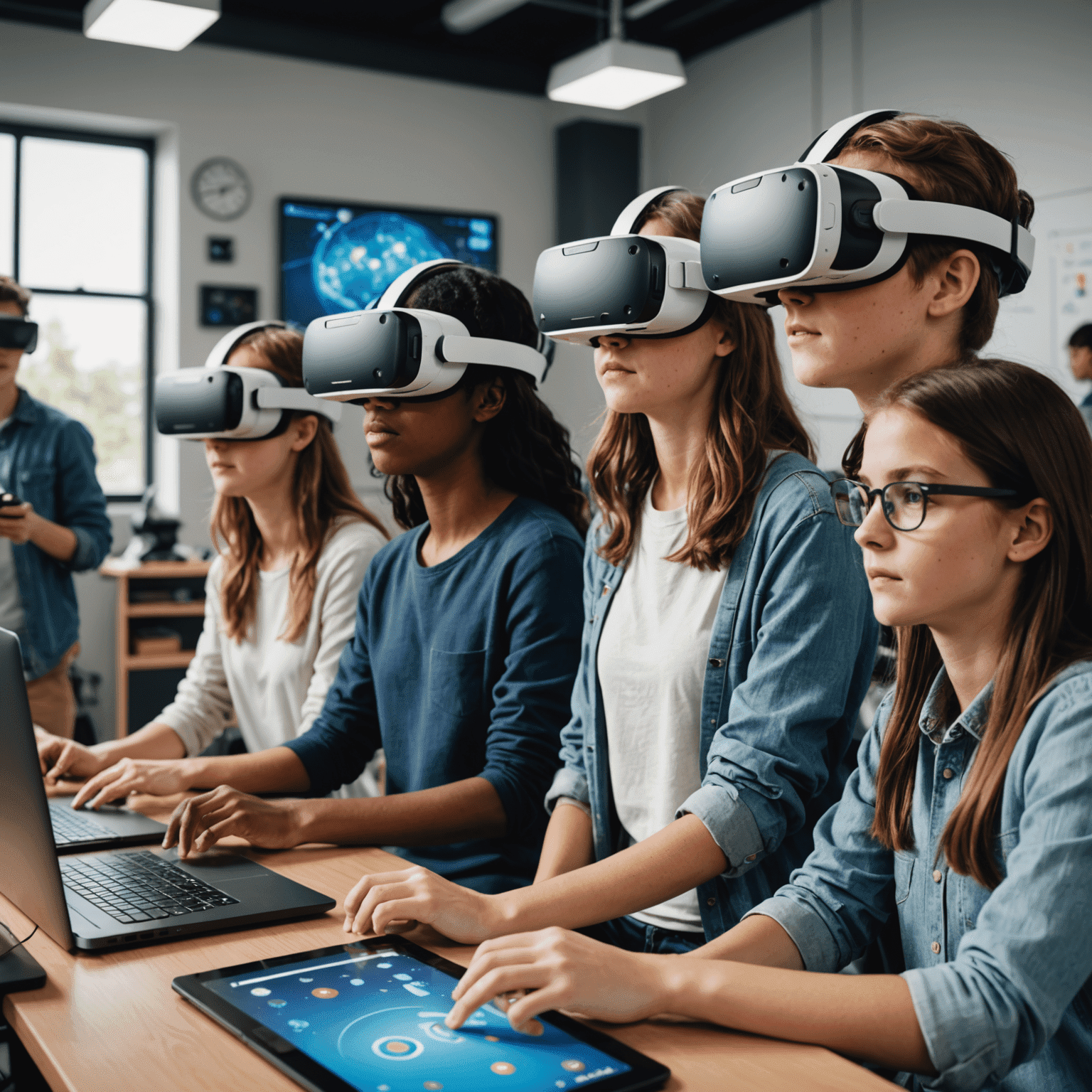Latest Trends in E-Learning
The landscape of online education is rapidly evolving, with cutting-edge technologies reshaping how we learn and interact in virtual classrooms. Let's explore some of the most exciting developments in e-learning platforms and digital education.

The future of e-learning: AI-powered personalization and immersive virtual reality classrooms
AI-Powered Personalization
Artificial Intelligence is revolutionizing online learning platforms by offering personalized learning experiences. These smart systems analyze student performance, learning patterns, and preferences to tailor course content, pacing, and assessments. This level of customization ensures that each learner receives a unique educational journey optimized for their individual needs.
"AI in e-learning isn't just about automation; it's about creating a responsive, adaptive environment that evolves with each student's progress."
Virtual Reality Classrooms
Virtual Reality (VR) is transforming the concept of distance learning by creating immersive, interactive environments. Students can now 'step into' historical events, explore complex molecular structures, or practice surgical procedures in a risk-safe virtual space. This technology is particularly revolutionary for fields that require hands-on experience, bridging the gap between theoretical knowledge and practical application.

VR technology enabling immersive learning experiences in virtual laboratories
Microlearning and Bite-sized Content
The rise of microlearning reflects the changing preferences of modern learners. E-learning platforms are now offering courses broken down into small, digestible units that can be completed in 5-10 minutes. This approach caters to busy professionals and students who prefer to learn in short bursts, improving information retention and making continuous learning more accessible.
Gamification and Interactive Learning
Gamification elements are being increasingly integrated into online courses to boost engagement and motivation. Learning management systems now incorporate features like points, badges, leaderboards, and interactive challenges. This game-like approach not only makes learning more enjoyable but also promotes healthy competition and provides instant feedback, enhancing the overall learning experience.
Mobile-First Learning
With the ubiquity of smartphones, e-learning platforms are adopting a mobile-first approach. This trend ensures that educational content is optimized for smaller screens, allowing learners to access courses, participate in discussions, and complete assignments on-the-go. Mobile-first design is making continuous learning a reality, fitting seamlessly into the busy lives of modern students.

Mobile-first learning enabling education anytime, anywhere
Conclusion
The future of e-learning is bright and dynamic, with technologies like AI, VR, and mobile optimization paving the way for more personalized, engaging, and accessible education. As these trends continue to evolve, they promise to make online learning not just a convenient alternative, but a preferred method of education for learners worldwide.